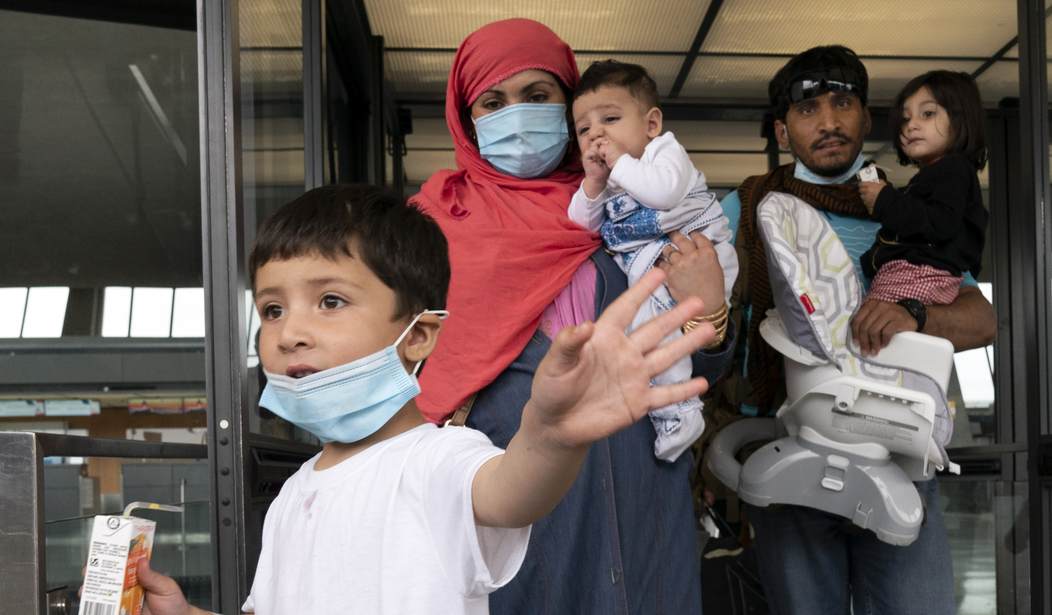I’ll remind you up front that the president insisted as recently as yesterday that the airlift out of Kabul had been an “extraordinary success.”
Biden hails the "extraordinary success" of the U.S. evacuation mission from Afghanistan and commends U.S. troops for "risking their lives to serve others" https://t.co/xJmPm7NzI3 pic.twitter.com/Z4luhU2xjA
— Bloomberg Quicktake (@Quicktake) August 31, 2021
His prime minister also turned up on television this morning to assert that the withdrawal had been handled as well as one could reasonably have hoped:
After chaos and death, Ron Klain claims Joe Biden “managed [the Afghanistan withdrawal] as well as it can be managed” pic.twitter.com/lyxAV9exlw
— RNC Research (@RNCResearch) September 1, 2021
All but a few hundred American citizens made it out, we’re assured, although some unknown universe of legal permanent residents that the White House clearly doesn’t want to talk about remains. But what about the Afghans who fought beside U.S. troops over the last 20 years, placing themselves and their families at risk of lethal reprisals from the Taliban if they were ever caught? How many of those people got out?
Reporters have been trying to put a number on it, using data from the Biden administration and nonprofit groups participating in the evacuation. NBC’s ballpark figure: Of the 120,000 or so people flown out of Kabul to safety, just 8,500 were Afghans. Out of a possible pool of 265,000 people.
That means just seven percent of evacuees were Afghan friendlies, the people with the most to lose from being left behind. And just three percent of those who were eligible for repatriation to the U.S. or other allied countries made it onto a military plane in the past three weeks.
Why would anyone work with the U.S. military again? Our promises of reward mean nothing.
As of May, about 18,000 to 20,000 Afghans who worked with U.S. troops and diplomats had applied for SIVs, according to government figures. When their family members are included, the pool of Afghans in the SIV program was at least 70,000 and probably higher, according to refugee advocacy groups.
But only about 8,500 Afghans appear to have made it out on evacuation flights that began in July, according to estimates from nongovernmental organizations and advocates and the figures released so far by the Biden administration…
“This outcome was completely avoidable. Had the administration listened to the many organizations and individuals who had been calling for an evacuation since the first announcement of the withdrawal timeline back in April, the evacuation could have taken place alongside the U.S. military withdrawal instead of afterward,” said Adam Bates, policy counsel at the International Refugee Assistance Project.
It’s true that refugee advocacy groups were calling for the evacuation to begin in April. Even before April, in some cases. There are receipts:
I’ve been sounding the alarm for months. https://t.co/82BkPpvVlD
— Matt Zeller (@mattczeller) August 31, 2021
NBC estimates that 265,000 Afghans qualified for emigration through one program or another. Some 70,000 were eligible for SIVs and another 50,000 either didn’t apply or were rejected for unknown reasons. A third group of 145,000 didn’t meet the requirements for SIVs but qualified under some other program benefiting people who worked for U.S.-funded groups or related projects. Hopefully some of that total pool of 265,000 made it out of the country through other means, whether by crossing the border by land or by hopping a flight out to parts unknown before Kabul fell.
But even if you want to write off the latter two groups as lower priority, it’s a travesty that, at best, just 12 percent or so of SIVs made it to safety. (“It’s unclear whether all [8,500] evacuees were in the SIV program,” NBC notes.) That’s a bipartisan failure — Team Trump’s determination to slow down processing created a backlog — but it was Team Biden’s colossal error in not anticipating how quickly the country would be overrun that sealed their fate.
Now we know why Seth Moulton and Peter Meijer returned from their trip to Kabul declaring that we couldn’t possibly get everyone out even if we convinced the Taliban to extend the deadline to September 11. With tens of thousands of people with SIVs still waiting and another 200,000 or so who might deserve passage on other grounds, it was hopeless. The process needed to begin months ago, when people like Zeller who grasped the urgency of the situation were pleading with Biden to act.
One U.S. official confirmed to the WSJ today that a majority of Afghan interpreters and visa-holders didn’t make it onto a flight out. Judging by NBC’s numbers, it’s a vast, vast majority.
Over 20,000 Afghans who had applied for the Special Immigrant Visa program remained in Afghanistan when Kabul fell to the Taliban on Aug. 15, according to advocacy groups and congressional officials.
Including their family members, as many as 100,000 Afghans may be eligible for relocation.
“Everybody who lived it is haunted by the choices we had to make and by the people we were not able to help,” the official added.
That’s a great comfort to the Afghans left behind, I’m sure, some of whom have now taken to pleading in the op-ed pages of American newspapers or with sympathetic reporters to relay messages to get them out before they’re murdered. Ironic, too, considering that evacuating our own journalists on the ground over there wasn’t a priority either.
All the White House can say to the tens of thousands of Afghans at risk behind enemy lines is that they’ll give it the ol’ college try:
White House Press Secretary Jen Psaki said that the commitment to helping Afghan partners stuck in the country following the U.S. withdrawal is "enduring," after a question about the rescue of an Afghan interpreter left behind.
Live Updates: https://t.co/x6JodoAd5u pic.twitter.com/8I6d4gHMzJ
— Newsweek (@Newsweek) September 1, 2021
A new poll today has public approval of Biden’s handling of Afghanistan at a grim 33/59, with no way to tell in which direction that’s going to move. Maybe he’ll rebound as Americans put the war behind them and feel relief that we’re no longer shoveling trillions into the Afghan money pit. Or maybe the drumbeat of stories of abandoned Afghans being murdered by the Taliban will drive it down further by highlighting the administration’s lack of foresight and deepening the sense of collective shame most Americans feel for not honoring our commitment to SIV holders. Democrats should be nervous. I’ll leave you with this:
Civiqs Biden approval by state:
-11 Arizona
-4 Colorado
-11 Florida
-13 Georgia
-9 Michigan
-4 Minnesota
-4 Nevada
+1 New Hampshire
-7 New Mexico
-12 North Carolina
-12 Pennsylvania
-25 Texas
-6 Virginia
-6 Wisconsinhttps://t.co/Df0oveLqke— Eric Cunningham (@decunningham2) September 1, 2021








Join the conversation as a VIP Member